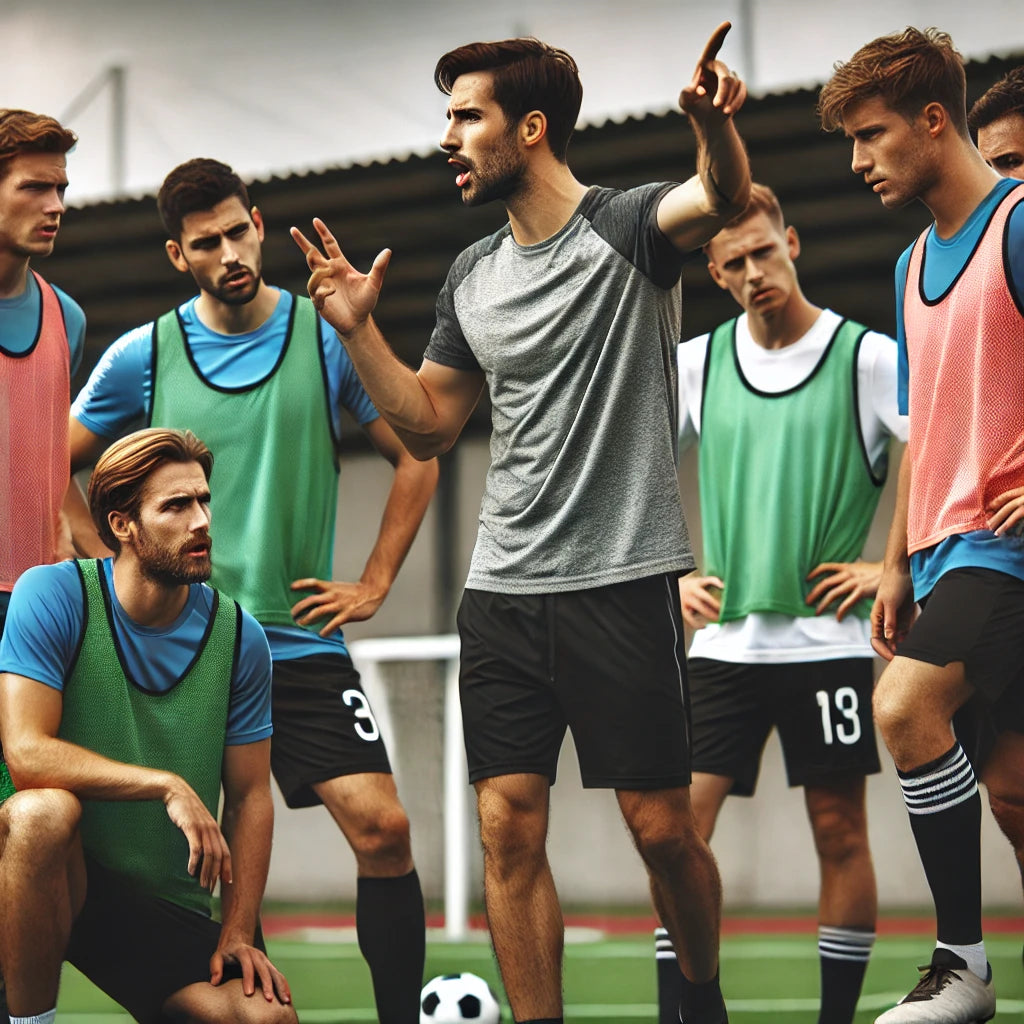
Communication: How to Train in the Field
Share
In the world of sports, communication is one of the most undervalued but also one of the most crucial skills. On the field, the way coaches and athletes interact can make or break a team. Clear, effective and assertive communication ensures that all team members are aligned on the game’s strategy, tactics and objectives. In this article, we’ll explore essential techniques for improving communication on the field and maximizing team performance.
1. Verbal and Nonverbal Communication
Communication on the pitch is not just about words. Gestures, facial expressions and body language all play a vital role. Sometimes, in a noisy or high-intensity environment, non-verbal cues can be more effective than words. Players should be aware of both types of communication and practice them regularly.
Examples of nonverbal communication in the field:
- Hand gestures to indicate movements.
- Eye contact with colleagues to get the message across without words.
- Body posture that indicates confidence or willingness to receive the ball.
2. Establish Codes of Communication
Many successful teams use codes or signals that only their players understand. These codes can be keywords, numbers or even specific gestures that indicate movements or rehearsed plays. Using a shared language, unique to the team, helps speed up decision-making on the field, preventing the opponent from decoding tactics.
Tips for creating communication codes:
- Use simple, easy-to-remember words.
- Adapt the codes to the team's playing style.
- Practice the codes regularly so they become natural during gameplay.
3. Active Listening
Communication is not just about talking or conveying messages, but also about active listening. On the pitch, players need to pay attention to what their teammates and coaches are saying. This active listening allows them to respond quickly and appropriately to changes in the game.
How to practice active listening:
- Pay full attention to what is being said, without interruptions.
- Confirm the message received to avoid misunderstandings.
- Use feedback constructively to improve performance.
4. Communicative Leadership
In any team, there are players who play a leading role on the pitch, whether due to their position, experience or skills. These players must be examples of effective communication, serving as a bridge between the coach and the other team members.
Characteristics of a good communicative leader:
- Ability to convey instructions clearly and calmly, even under pressure.
- Know when to motivate or correct teammates.
- Maintain composure and confidence, especially in moments of greater tension.
5. Coach Communication
The coach is the central figure in a team's communication. He is the one who defines the strategy and gives instructions to the players. However, the effectiveness of this communication depends on clarity, consistency and the ability to adapt to the team.
Best practices for coaches:
- Use simple and direct language.
- Avoid overloading players with too much information before and during the game.
- Provide positive and constructive feedback to improve team morale.
6. Train Communication in Game
Like any other skill, communication needs to be trained. Including specific exercises that involve verbal and non-verbal communication during training can make a huge difference in team performance.
Exercise suggestions:
- Simulated games in which only gestures can be used to communicate.
- Feedback sessions where players analyze the effectiveness of communication during training.
- Communication challenges under pressure, where players have to make quick decisions based on limited instructions.
Conclusion
Communication is the common thread that connects all aspects of team play. Whether through words, gestures or codes, knowing how to communicate effectively on the pitch can transform collective performance. Invest time in practicing this skill, and you will see the results reflected in your team’s success.
Soccer Skills: How to Train to Improve Your Game
Other Recommended Readings on the Blog:
- How to Stay Motivated When Working Out at Home – Tips to stay focused and not give up on your goals.
- The Best Home Exercises for Beginners – A complete introduction to the most effective exercises for beginners.
- Strength Training vs. Cardio : Which is Better for Weight Loss ? – Clarifies doubts about the benefits of each type of training and how to combine them.
- 10 Simple Pieces of Equipment That Will Make All the Difference in Your Home Workout – Discover which accessories are worth having at home to maximize your workouts.
If you are already thinking about transforming your body, now is the perfect time to get started! Together, we will build the best version of you.
Train wherever and whenever you want!
Transform your training routine with Training 365!
Access to 365 annual trainings (50-60 minutes per session), providing you with a varied daily plan that you can carry out at home, outdoors or at the gym . With a new workout every day, you'll stay motivated, active and ready to achieve your fitness goals, whether you're just starting out or improving your performance.
What it includes:
- Daily access to 50-60 minute workouts
- Access to Home Workout ® App
- Workouts for all levels
- Flexibility to train anywhere
Value: €18.15/month
Examples of plans Training 365 :
The Christmas season is almost here, and with it comes the usual search for the perfect gift. If you want to give something truly special and meaningful this year, we have a unique suggestion: well-being !
Offer Well-Being to those you LOVE!
With the Home Workout Gift Card , you give your loved ones the opportunity to take care of their health and body in a practical way, without leaving home.





